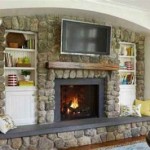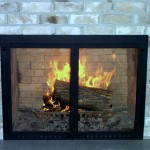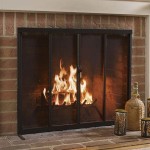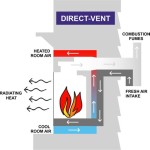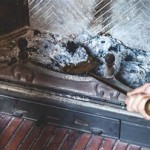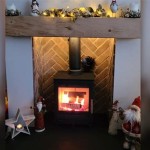Gas Fireplace Decorative Stones: Enhancing Ambiance and Functionality
Gas fireplaces offer a convenient and efficient alternative to traditional wood-burning fireplaces, providing warmth and visual appeal with the turn of a switch. A crucial element in their aesthetic design is the use of decorative stones. These stones not only contribute to the overall appearance of the fireplace but also play a role in heat distribution and flame presentation. The selection of decorative stones is a significant decision, influencing the fireplace's visual character and thermal performance. This article explores the various aspects of gas fireplace decorative stones, examining their types, benefits, selection criteria, and maintenance considerations.
Types of Decorative Stones for Gas Fireplaces
A wide variety of decorative stones are available for gas fireplaces, each possessing distinct characteristics and visual qualities. The choice of stone depends on the desired aesthetic and the operational requirements of the fireplace. Some common options include:
River Rock: River rock is a popular choice due to its natural, rounded shapes and smooth textures. These stones are typically sourced from riverbeds and are available in a range of sizes and colors, often featuring earth tones like browns, grays, and tans. River rock contributes a rustic and organic feel to the fireplace, creating a connection to the outdoors. Its varied shapes allow for a more natural flame presentation as the gas jets weave their way through the rocks.
Fire Glass: Fire glass is a modern and increasingly popular alternative to traditional stones. It consists of tempered glass fragments that are designed to withstand high temperatures. Fire glass is available in a multitude of colors, shapes, and sizes, allowing for a highly customizable and contemporary look. The reflective surface of fire glass enhances the visual impact of the flames, creating a dazzling display of light and color. It also tends to allow for more even heat distribution.
Lava Rock: Lava rock is a porous volcanic rock known for its heat retention properties. Its rough texture and dark, earthy tones provide a visually striking contrast to the flames. Lava rock can help to distribute heat evenly and create a more consistent flame pattern. Its porous nature also allows it to be infused with various scents, adding an aromatherapy element to the fireplace experience.
Ceramic Logs: While not technically stones, ceramic logs are frequently used in gas fireplaces to mimic the appearance of a traditional wood-burning fire. These logs are crafted from high-temperature ceramic materials and are designed to withstand the intense heat of the gas flames. Ceramic logs are often meticulously detailed to resemble different types of wood, providing a realistic and classic aesthetic.
Shale and Slate: These sedimentary rocks offer a more refined and contemporary appearance. Their layered structure and subtle variations in color provide a sophisticated and understated elegance. Shale and slate are available in various sizes and shapes, allowing for a customized arrangement that complements the overall design of the fireplace.
Benefits of Using Decorative Stones
Beyond their aesthetic appeal, decorative stones offer several functional benefits in gas fireplaces. These benefits contribute to the fireplace's performance, efficiency, and safety.
Heat Distribution: Decorative stones play a role in distributing heat generated by the gas flames. They absorb and radiate heat, helping to warm the surrounding space more evenly. This is particularly important in larger rooms or when the fireplace is used as a primary heating source. The optimal size and arrangement of the stones can improve heat distribution and reduce hot spots.
Flame Presentation: The arrangement of the stones directly impacts the appearance of the flames. By strategically placing the stones, it is possible to create a more natural and visually appealing flame pattern. The stones can help to diffuse the gas jets, creating a wider and more realistic-looking fire. Different types of stones offer different flame effects, from the dancing flames of fire glass to the flickering flames of river rock.
Safety: Decorative stones can act as a barrier, preventing accidental contact with the hot burner components. This is especially important in households with children or pets. The stones also help to contain the flames and prevent them from spreading beyond the designated firebox area. Proper installation and maintenance of the stones are crucial to ensure their safety effectiveness.
Aesthetic Enhancement: The primary benefit of decorative stones is their ability to enhance the aesthetic appeal of the fireplace. They transform a simple gas burner into a visually striking focal point in the room. With a wide range of stone types, colors, and arrangements available, it is possible to create a fireplace that perfectly complements the décor and style of the home.
Fuel Efficiency: While not a direct contributor, decorative stones can indirectly improve fuel efficiency. By promoting more even heat distribution, they can help to reduce the amount of gas required to maintain a comfortable temperature. This can lead to lower energy bills and a reduced environmental impact.
Selecting the Right Decorative Stones
Choosing the right decorative stones for a gas fireplace involves considering several factors, including the desired aesthetic, the fireplace's functionality, and the safety requirements. A careful evaluation of these factors will ensure that the selected stones are both visually appealing and perform effectively.
Aesthetic Compatibility: The stones should complement the overall style and décor of the room. Consider the color palette, architectural features, and existing furniture when selecting the stones. For a modern aesthetic, fire glass or shale might be appropriate, while river rock or ceramic logs would be better suited for a more traditional or rustic style. Visualizing different stone options in the context of the room can help to make an informed decision.
Fireplace Size and Type: The size of the fireplace will influence the amount and type of stones required. A larger fireplace will require a greater volume of stones to create a visually balanced effect. The type of fireplace, whether it is a direct-vent, vent-free, or B-vent model, may also dictate the types of stones that are compatible. Consult the fireplace manufacturer's instructions for specific recommendations.
Heat Output and Efficiency: Consider the desired heat output and efficiency of the fireplace when selecting the stones. Certain stones, such as lava rock, are known for their heat retention properties and can help to improve heat distribution. The arrangement of the stones can also influence the fireplace's efficiency. Avoid overcrowding the burner, as this can restrict airflow and reduce heat output.
Safety Considerations: Ensure that the selected stones are specifically designed for use in gas fireplaces and are able to withstand high temperatures without cracking or crumbling. Avoid using stones that are not intended for fireplace use, as they may release harmful chemicals when heated. Follow the manufacturer's instructions for proper installation and arrangement of the stones to ensure safe operation.
Maintenance Requirements: Consider the maintenance requirements of the different stone types. Some stones, such as fire glass, may require periodic cleaning to remove soot or dust. Other stones, such as lava rock, may need to be replaced periodically if they become saturated with moisture or debris. Choose stones that are easy to clean and maintain to ensure long-lasting performance and appearance.
Budget: The cost of decorative stones can vary widely depending on the type, size, and quantity. Set a budget before beginning the selection process to narrow down the options. Consider the long-term value and durability of the stones when making a decision. While cheaper options may be tempting, they may not be as durable or visually appealing as higher-quality stones.
Professional Advice: Consult with a qualified fireplace technician or installer for expert advice on selecting the right decorative stones for a specific fireplace. They can provide valuable insights into the performance characteristics, safety requirements, and aesthetic considerations of different stone types. Their expertise can help to ensure that the selected stones are a perfect fit for the fireplace and the home.
In conclusion, the selection of decorative stones for a gas fireplace is a multifaceted process that requires careful consideration of aesthetic, functional, and safety factors. By understanding the different types of stones available, their benefits, and the relevant selection criteria, it is possible to create a fireplace that is both visually stunning and performs optimally. Proper installation and maintenance are essential to ensure the longevity and safety of the decorative stones, providing years of enjoyment and warmth.

50 Sensational Stone Fireplaces To Warm Your Senses

Country Ideas For Decorating Your Fireplace Stacked Stone Fireplaces Brick Decor Designs

50 Sensational Stone Fireplaces To Warm Your Senses

Gas Fireplace Inserts Pros And Cons Of Ventless Fireplaces

Kingsman Barbara Jean Decorative Stones Media Mqstone Stone Us Fireplace

Fire Pit Glass Everything You Need To Know

Decorative Arched Insert Fireplaces Stovax Traditional

Decorative Gas Fireplaces For The Modern Home From Real Flame

ᑕ❶ᑐ Faux Stone Electric Fireplace Where Does It Match Best

American Fireglass Lava Fire Rocks
Related Posts

